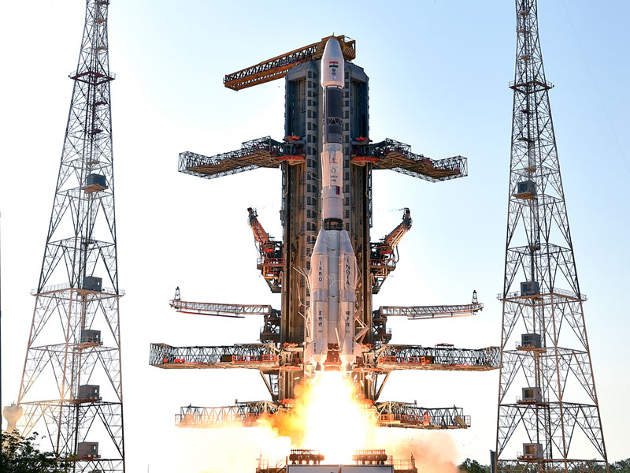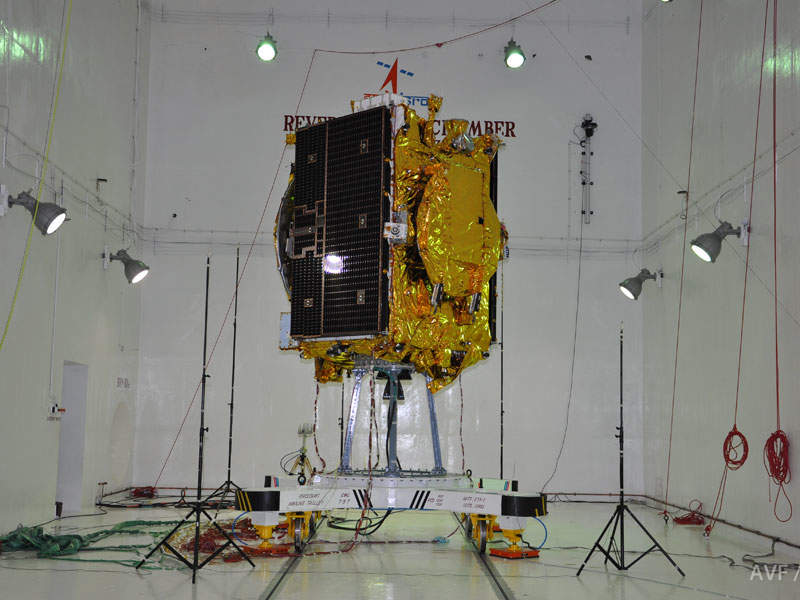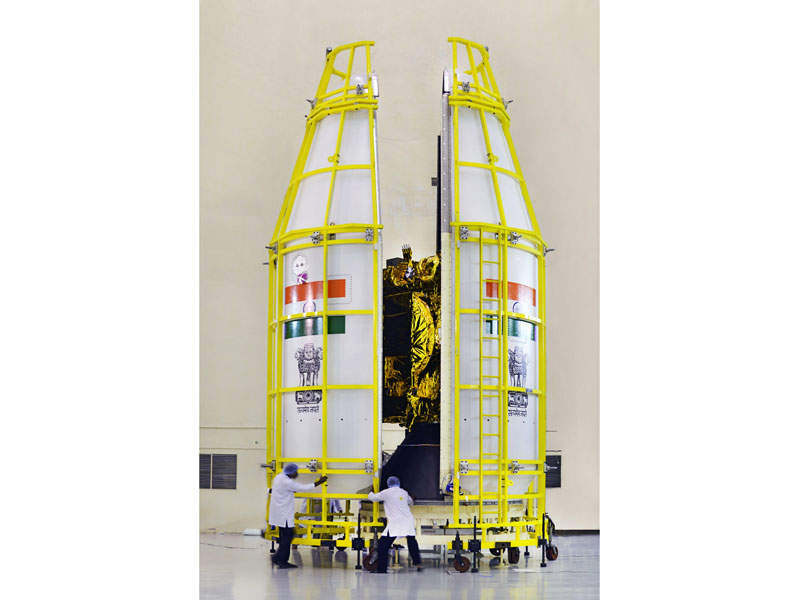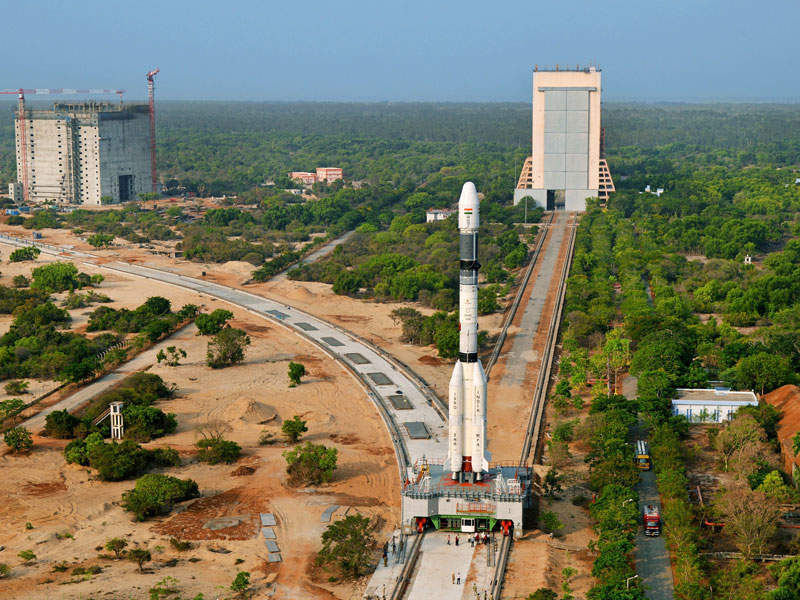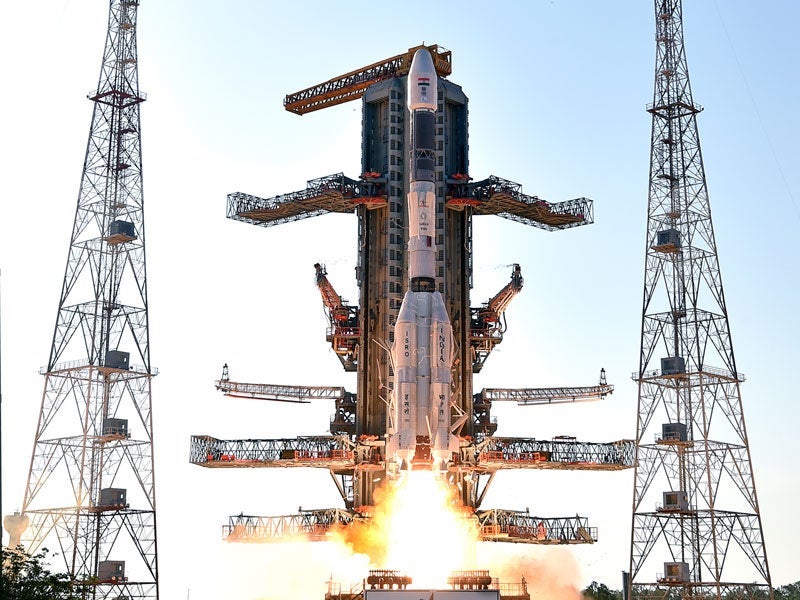
GSAT-9 is a new geostationary communication satellite launched by the Indian Space Research Organisation (ISRO) from the Satish Dhawan Space Centre (SDSC) in Sriharikota, Andhra Pradesh, India, in May 2017. The satellite was developed for approximately Rs4.5bn ($70m).
The spacecraft offers Ku-band communication applications with coverage across South Asia, including India, Bangladesh, Bhutan, Maldives, Nepal, Sri Lanka and Afghanistan.
GSAT-9 satellite design and features
Designed and manufactured by the ISRO, the satellite was developed by the organisation’s space applications centre in Ahmedabad. The spacecraft is based on ISRO’s standard I-2K bus.
The satellite has a launch mass of 2,230kg and a dry mass of 976kg. It measures 1.53m-long, 1.65m-wide and 2.40m-high. Its main structure, cuboidal in shape, was built around a central cylinder. The satellite has a designed lifespan of 12 years.
The satellite has two antennae, including a 1.4m Ku-band reflector on West side, and a 2m x 2.2m ku-band reflector on East side. The two solar arrays aboard the spacecraft are equipped with ultra-triple junction solar cells capable of generating approximately 3,500W of electrical power.
The satellite also carries two 90AH lithium-ion batteries. Its orientation is maintained by the attitude and orbit control system (AOCS) along with momentum wheels, magnetic torquers and thrusters. The satellite also features Sun and Earth sensors, as well as gyroscopes.
The satellite’s propulsion system encompasses 440N liquid apogee motor, eight 10N and eight 22N chemical thrusters for initial orbit-raising and station-keeping, and four 18mN stationary plasma thrusters for station-keeping.
Communication capabilities of the Asian satellite
The satellite includes 12 Ku-band transponders and a GPS-aided GEO-augmented navigation (GAGAN) payload. It can be used for various broadcasting and interactive telecommunication applications, including DTH, e-governance, telemedicine, banking and VSAT.
Other supporting applications include disaster management support, meteorological data broadcasting, and networking of academic, scientific and research institutions.
The GAGAN payload provides GPS services to the security forces and air traffic control authorities.
Launch vehicle details of the GSAT-9 satellite
The GSAT-9 satellite was launched into the geosynchronous transfer orbit (GTO) aboard geosynchronous satellite launch vehicle (GSLV) F09 mission. The length of the launch vehicle is 49.1m.
The first stage of the rocket was powered by four liquid propellant strap-on motors and solid propellant core stage. The second stage was powered by liquid propellant, while the third stage of the rocket was powered by a cryogenic engine. It has a metallic payload fairing with a diameter of 3.4m.
The strap-on boosters were ignited 4.8s before the lift-off. The first stage separation was concluded after 2min and 31.2s. The payload fairing separation was completed in three minutes and 48.70 seconds.
The second stage separation took four minutes and 52.36 seconds to complete, while the third and cryogenic upper stage was shut-off after 16min and 49.50s. The GSAT-9 satellite separation was completed after 17min and 4.50s.
The satellite was launched from the second launch pad (SLP) at the SDSC.
Ground control station for GSAT-9
The master control facility (MCF) at Hassan, Karnataka, India, handles the GSAT-9 satellite operations, including orbit raising manoeuvres.

